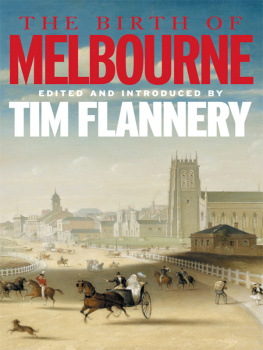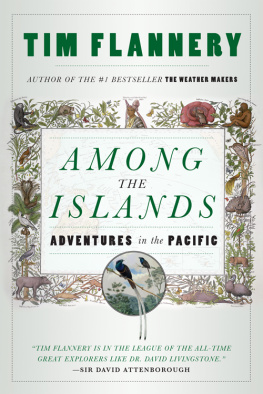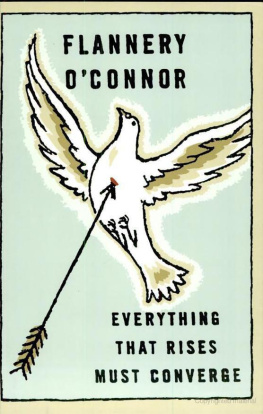OTHER BOOKS BY THE AUTHOR
Mammals of New Guinea
Tree Kangaroos: A Curious Natural History
with R. Martin, P. Schouten and A. Szalay
The Future Eaters
Possums of the World: A Monograph of the Phalangeroidea with P. Schouten
Mammals of the South West Pacific and Moluccan Islands
Watkin Tench, 1788 (ed.)
The Life and Adventures of John Nicol, Mariner (ed.)
Throwim Way Leg
The Explorers (ed.)
THE BIRTH OF
SYDNEY
EDITED AND WITH AN INTRODUCTION BY
TIM FLANNERY
GROVE PRESS
New York
A CKNOWLEDGMENTS
This book has benefited from the inspiration and dedication of many. Michael Heyward of Text Publishing conceived the idea, edited the material and polished my contributions. Melanie Ostell, Emma Gordon Williams and Stuart Kells performed critical interventions during the arduous production, chasing down errant authors, correcting various defects and sourcing details of contributions, times and places. I cannot thank them enough. Always by my side has been Alexandra Szalay, who helped collect materials, organised vast piles of paper and read proofs on two continents and in three cities as this book gestated. Without her help all would have been chaos. George Thomas also proofread the manuscript, bringing uniformity and correctness to an unruly collection.
The production of a work such as this is simply not possible without the co-operation, indeed enthusiasm, of the custodians of archival records and rare books in institutions across the continent. Carol Cantrell of Information Services at the Australian Museum, Jennifer Broomhead of the Mitchell Library and Des Cowley and Gerard Hayes of the State Library of Victoria all played vital roles in providing access to material.
Copyright 1999 by Tim Flannery
All rights reserved. No part of this book may be reproduced in any form or by any electronic or mechanical means, including information storage and retrieval systems, without permission in writing from the publisher, except by a reviewer, who may quote brief passages in a review. Any members of educational institutions wishing to photocopy part or all of the work for classroom use, or publishers who would like to obtain permission to include the work in an anthology, should send their inquiries to Grove/Atlantic. Inc., 841 Broadway, New York, NY 10003.
Originally published in 1999 by The Text Publishing Company, Melbourne, Victoria, Australia
Published simultaneously in Canada
Printed in the United States of America
FIRST AMERICAN EDITION
Library of Congress Cataloging-in-Publication Data
The birth of Sydney / edited and introduced by Tim Flannery.
p. cm.
Originally published: Melbourne : Text Pub., 1999.
Includes bibliographical references.
ISBN 0-8021-3699-0
eISBN: 978-0-8021-9108-3
1. Sydney (N.S.W.)History. I. Flannery, Tim F. (Tim Fridtjof), 1956
DU178.B54 2000
994.4'1dc21
00-022769
Cover design by Bradford Foltz
Cover art: (top) Bettman/CORBIS (bottom) The Granger Collection
Designed by Chong Wengho
Map drawn by Norman Robinson
Grove Press
841 Broadway
New York, NY 10003
00 01 02 03 10 9 8 7 6 5 4 3 2 1
To the Cadigaleans
with the deepest regret that our shared
history is not different, and with a promise to
cherish Cadi and all its creatures.
Contents
T IM F LANNERY
The Sandstone City
O n 6 February 1788, Sydney was ten days old. The men of the First Fleet, both soldiers and prisoners, had already been ashore at Port Jackson for much of that time, preparing the ground and setting up camp. Now the women convicts were set ashore. There were more than 700 convicts but fewer than 200 of them were female, and the sexes had been kept apart in hulks, prisons or transports for at least a year.
The women had enjoyed solid ground beneath their feet for only an hour when the sweltering summer evening was lit up by a prodigious thunderstorm. Lightning knocked a sentry to the ground and temporarily blinded him; a pig and at least five of the colony's precious sheep were electrocuted. The storm was a manifestation of austral nature at its grandest, and it terrified many of the newly arrived Europeans, who cringed in their cabins or prayed by their bunks.
With authority blinded or cowering under cover, the lower orders seized the moment. The sailors of the Lady Penrhyn obtained a double ration of rum to celebrate the offloading of the women convicts, and fortified with the ardent spirit they soon found amusement singing, fighting and fucking.
A few days later the prudish Lieutenant Ralph Clark lamented at what he had seen, presumably intermittently as lightning struck the various unfortunates: Good God what a Seen of Whordome is going on there in the women's camp...I would call it by the name Sodom for there is more sin committed in it, than in any other part of the world. Clark's comparison with Sodom soon proved more accurate than he imagined.
The tempests continued for several days, but the mornings were tranquil, steamy and sodden, as is so often the case after the passing of a summer storm in Sydney. The record of what happened on one such morning is incomplete, but from the evidence I can imagine the scene that unfolded. In the dawn light a party of marines is trudging through the mud towards the women's camp. They search tent after tent, evicting scrawny, rag-clad convicts and poxy sailors nursing hangovers. Sometimes one, perhaps two or three emerge from a tent, holding their heads as a convict moll screams at the soldiers, You can kiss my c... Grim-faced the marines continue with their task until out of one tent is dragged a ship's carpenter. You're for it, mate, whispers a marine through clenched teeth to the malefactor, whose transgression is all the worse because he is supposed to be one of the few figures of respectability in the settlement. The carpenter's paramour follows, but then to everyone's surprise a third figure emerges. It's the cabin boy from the Prince of Wales transport.
An exasperated Arthur Phillip, governor of the colony, seems to have been as uncertain of the appropriate punishment as he was of the nature of the crime, so he ordered the cabin boy and the carpenter paraded out of camp to that sprightly, sardonic tune The Rogue's March. The fife-players probably gave a fine rendition, for they were doubtless well practised; the ceremonial salute in reverse was heard more often than any tune in the early days of the colony, except perhaps God Save the King.
The scene that followed was a sort of prototype for Sydney's Gay and Lesbian Mardi Gras. The hungover convicts, scurvy-plagued sailors and red-coated marines were assembled into files, through which the curious procession of miscreants marched. First came the fifes, playing the mocking air with all the vigour they could muster. Close behind came the disgraced carpenter, his hands bound behind him, while bringing up the rear was the cabin boy, arraigned in petticoats and heartily jeered by the crowd. When the motley procession reached the camp boundary there must have been a moment of hesitation, for beyond the rough clearing there was nothingno European settlement for thousands of kilometres. Their punishment over, the cabin boy and the carpenter straggled back into camp. There was simply nowhere else to go.














